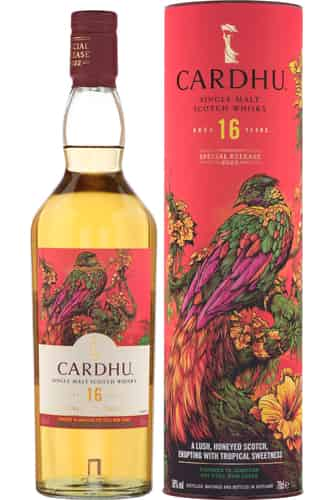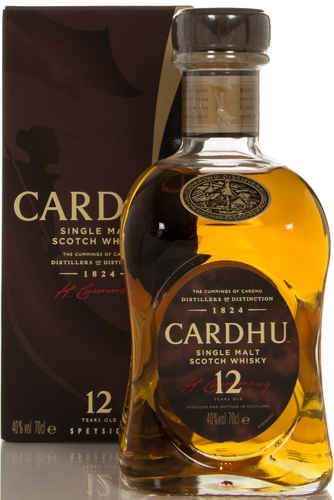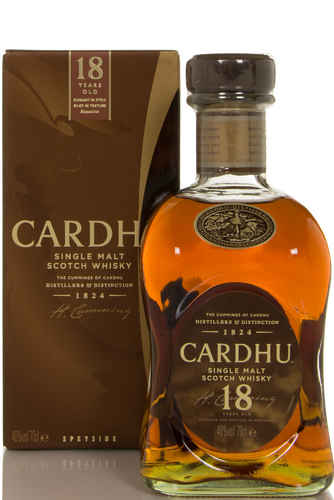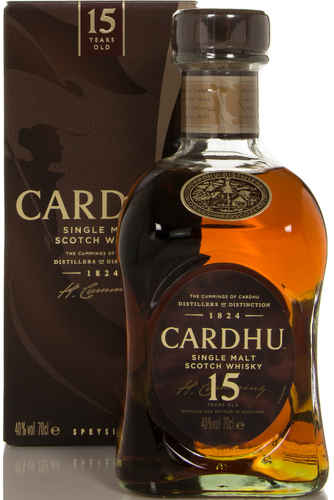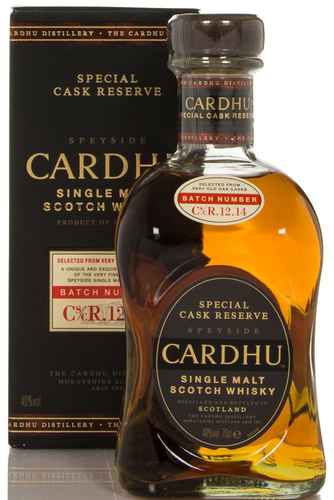 United States - DHL 15.00 € + 7.70 € /kg
United States - DHL 15.00 € + 7.70 € /kg
Cardhu
- Save
8.80 €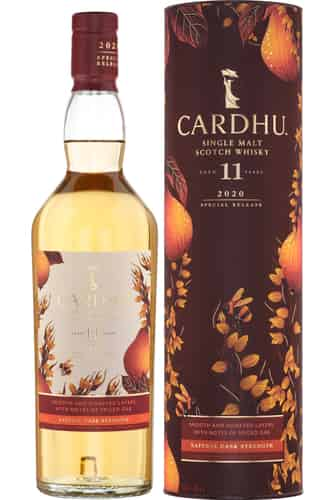
Cardhu 11 Year Old (2020 Special Release)
70 cl, 56%In stock77.60 €86.40 € 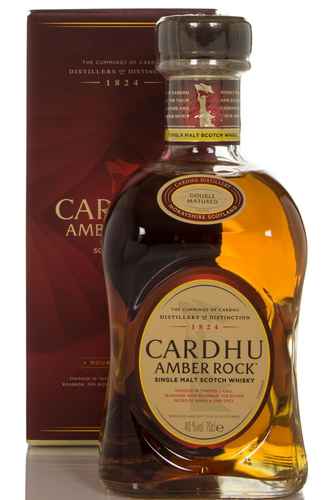
Cardhu Amber Rock
70 cl, 40%In stock36.00 €![]()
Cardhu 16 Year Old (2022 Special Release)
70 cl, 58%In stock167.20 €![]()
Cardhu 12 Year Old
70 cl, 40%Out of stock47.20 €![]()
Cardhu 18 Year Old
70 cl, 40%Out of stock87.20 €![]()
Cardhu 15 Year Old
70 cl, 40%Out of stock60.00 €![]()
Cardhu Gold Reserve
70 cl, 40%Out of stock38.40 €![]()
Cardhu Special Cask reserve
70 cl, 40%Out of stock46.40 €
Sorry, we didn't find anything. Please try changing your search criteria.
Cardhu History
Standing on the hills on the north side of the Spey valley, the distillery enjoys a panoramic view of the distilling hotspot of Speyside. One of the oldest distilleries around, most whisky drinkers will have consumed some Cardhu even if they were not fully aware of it, due to its extensive use in Johnnie Walker blends! Cardhu is the best selling malt whisky of Diageo’s range.
Cardhu is known for its sweet, clean, approachable malt flavour, that keeps the grain front and centre in the whisky. Jim Murray hit the nail on the head when, in his 2008 Whisky Bible, he wrote that Cardhu was "just about the cleanest, most uncluttered, pure, sweet malt you will ever find." Perhaps it is this approachability that accounts for the whisky’s enormous success. Not only is the whisky the best selling single malt in Diageo’s enviable portfolio, but it is also the best selling whisky by volume in both France and Spain. Indeed, the Spanish market claims over three quarters of Cardhu’s volume sales. Nearly 75% of all Cardhu whisky does not even make to the shelves as a single malt, as it is used as a crucial ingredient in the Johnnie Walker blends.
Yet, as any producing businessman will tell you, too much demand can be a bad thing! And indeed, with Cardhu it led to one infamous incident in the distillery’s history. Struggling to keep up with demand for the whisky in Greece, Portugal, Spain and France, and with older stocks dwindling, Diageo released a "Cardhu Pure Malt" in 2003. The distillery has a capacity of 2.3 million litres a year, which whilst not the smallest, is far from the largest either. "Cardhu Pure Malt" was a vatted malt, containing malt whisky from surrounding distilleries, and provoked the ire of the whisky drinking community, who felt that the packaging (near identical to the single malt) and the name (which had previously been used by distilleries in place of the term "single malt") was deliberately pulling the wool over the eyes of consumers. Eventually the Scotch Whisky Association, the industry watchdog, stepped in, and Cardhu brought back in the old 12 year old bottling.
With the issue happily resolved, Cardhu went back to making a quality single malt whisky, though due to the lack of stock there remain very few independent bottlings of the distillery’s spirit. Drinkers of Cardhu should expect notes of white grape, sweet barley, honey and apples, with a light perfumed nose.
Timeline
-
1811
First founded as an illicit still by John Cummings, a local farmer and smuggler, who worked with his wife Helen.
Helen proved equally as devious as her husband, and finely honed a routine to avoid the clutches of the excise men. Whenever they would come around, she would justify the mashing and fermenting malt as part of her bread making operation. Then, whilst the inspectors were taking the tea she would brew up for them, Helen would hoist a red flag above their barn. It being Speyside, there were plenty of other distillers around, and this was a warning to them that the government men were on the prowl.
The location of Mannoch Hill, high above the Spey valley, was chosen as the peat in the area softens and filters the water. The distillery was run on a seasonal basis, as it was mostly an extension to the farm. Helen was mostly in charge of both production and retail, selling the whisky to passers-by through a window in the farm cottage in which the distillery was based.
-
1824
Cardhu is legitimised, as Cummings first purchases a licence for the distillery.
-
1846
After John’s death, another Cummings takes over, Lewis, to continue the family concern.
-
1872
Lewis dies, and his maverick widow, Elizabeth takes over the distillery, proving to be one of whisky’s earliest female pioneers.
She immediately decided that the distillery was not up to scratch, so started to construct an entirely new distillery on a patch of land just next door.
-
1884
This new distillery is completed. The stills from the old distillery were sold to William Grant, who used them to found his famous Glenfiddich distillery.
-
1887
The distillery is expanded again, increasing its capacity.
-
1893
This greater capacity attracted the attention of John Walker & Sons, who were worried about a shortage of good quality malt whisky for their blends, and wanted to secure a supply. They purchased the distillery for £20,500 and rebranded it as Cardhu (from Cardow, the name it had carried before), from the Gaelic for "Black Rock". The Cummings family, however, continue to run the business.
-
1908
The distillery name changes back to Cardow.
-
1925
John Walker and Sons merged with Distillers Company Limited, a forerunner of Diageo.
-
1930
Scottish Malt Distillers begin to handle the administration of the distillery.
-
1939-1945
The Cummings way of doing things comes to a close with the Second World War, as grain shortages require a moratorium on distilling.
-
1960
The stills are increased by half, from four to six, resulting in a much larger capacity.
-
1981
The distillery’s name changes again, this time back to Cardhu.
-
1998
Owners Diageo decided to build a visitor centre at the distillery, attracting visitors.
-
2000
A rarer, older release is allowed by Diageo, of a 27 year old for their Rare Malts range, bottled at cask strength, and with out chill filtration, this was a special offering indeed.
-
2002
Sales of Cardhu top 3 million bottles a year, leading to serious supply issues for Diageo.
-
2003
Production of Cardhu’s single malt is halted, and changed to a vatted malt with whisky from other distilleries. The bottling is virtually identical to the old single malt packaging, and the phrase "pure malt" is ambiguous.
-
2004
Huge opposition is mounted to Cardhu’s move, and eventually the Scotch Whisky Association intervene, with a compromise between Diageo and the whisky watchdog reached.
-
2005
The Pure Malt is retracted, and the 12 year old reinstated, alongside a 22 year old, which is well received.
-
2016
Cardhu’s new NAS release, Cardhu Gold Reserve, picks up a Gold Medal at the Scotch Whisky Masters, run by The Spirits Business magazine.

